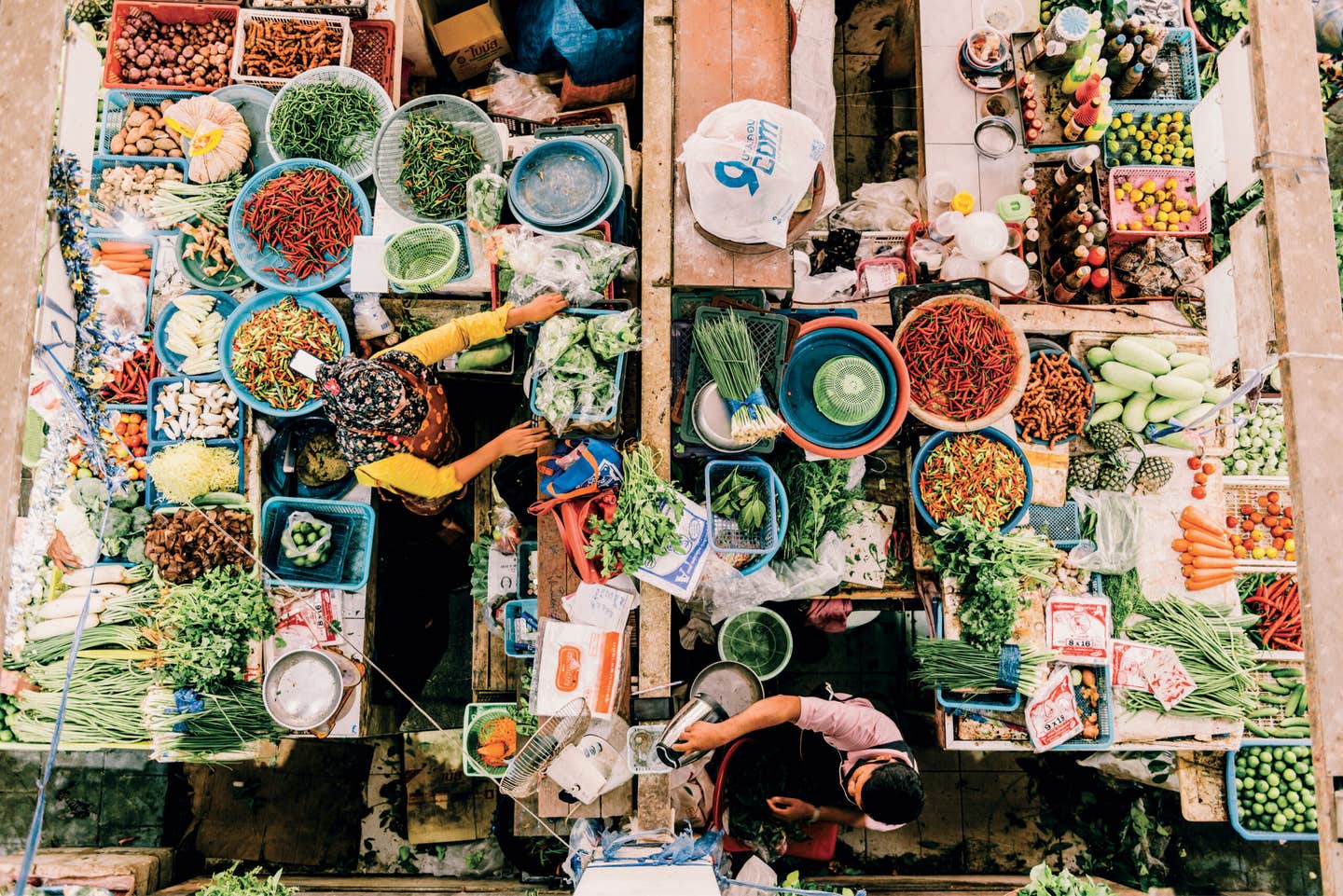
Decades of Travel Inform This Guide to Southern Thai Cooking
Austin Bush offers a meticulously researched, gorgeously photographed collection of recipes from the region.
This interview is brought to you by the SAVEUR Cookbook Club, our passionate community of food-loving readers from around the globe celebrating our favorite authors and recipes. Join us as we cook through a new book every month, and share your food pics and vids on social media with the hashtags #SAVEURCookbookClub and #EatTheWorld.
As anyone eagerly anticipating season 3 of HBO’s “The White Lotus” knows, Southern Thailand is home to some of the most beautiful white-sand and blue-water beaches, lush rainforests, and breathtaking coral reefs in the world. Its history is just as much a draw for visitors, an opportunity to learn about the collision of several different ethnic and religious groups that shaped the region’s distinct architecture, culture, and cuisine. Yet the foods most tourists encounter in Southern Thailand rarely display the breadth and complexity of the region. To truly understand the beauty and diversity of Southern Thailand, one needs the guidance of a true documentarian. And you couldn’t ask for a better guide than Austin Bush.
After receiving his degree in linguistics from the University of Oregon, Bush moved to Thailand and began a 20-year love affair with the country, researching, photographing, and writing about its multifaceted history, communities, and food for numerous publications. In his latest book, The Food of Southern Thailand, his photographs capture the beauty of Southern Thailand, and his prose offers up a tribute to the brilliance of Southern Thai home cooks, proprietors, and restaurateurs. As Bush says in his introduction, “The recipes that stem from this process are not mine; rather, they are my effort to capture and share what the people of Southern Thailand cook and eat.” Yet via Bush’s explanations, the stories behind the dishes come fully to life via their locales: the sweet factories of Phuket, the indulgent breakfast menus of Trang, the urban eateries of Hat Yai, Nakhon Si Thammarat, and beyond all get their time in the spotlight, as do the skilled farmers and fishermen that secure the signature ingredients of the region.
When I spoke with Bush from his current home in Lisbon, Portugal, it was clear that though his research in Thailand has momentarily concluded, he remains passionate about the chance to tell more stories about the people and dishes he encountered in his travels. Even for those who might only read his book as a travelog, he hopes that it might serve as an invitation to push past the beaches and what he calls the “well-worn ruts of the tourist trail,” and towards a full appreciation of the vibrancy of Southern Thai cuisine and culture.
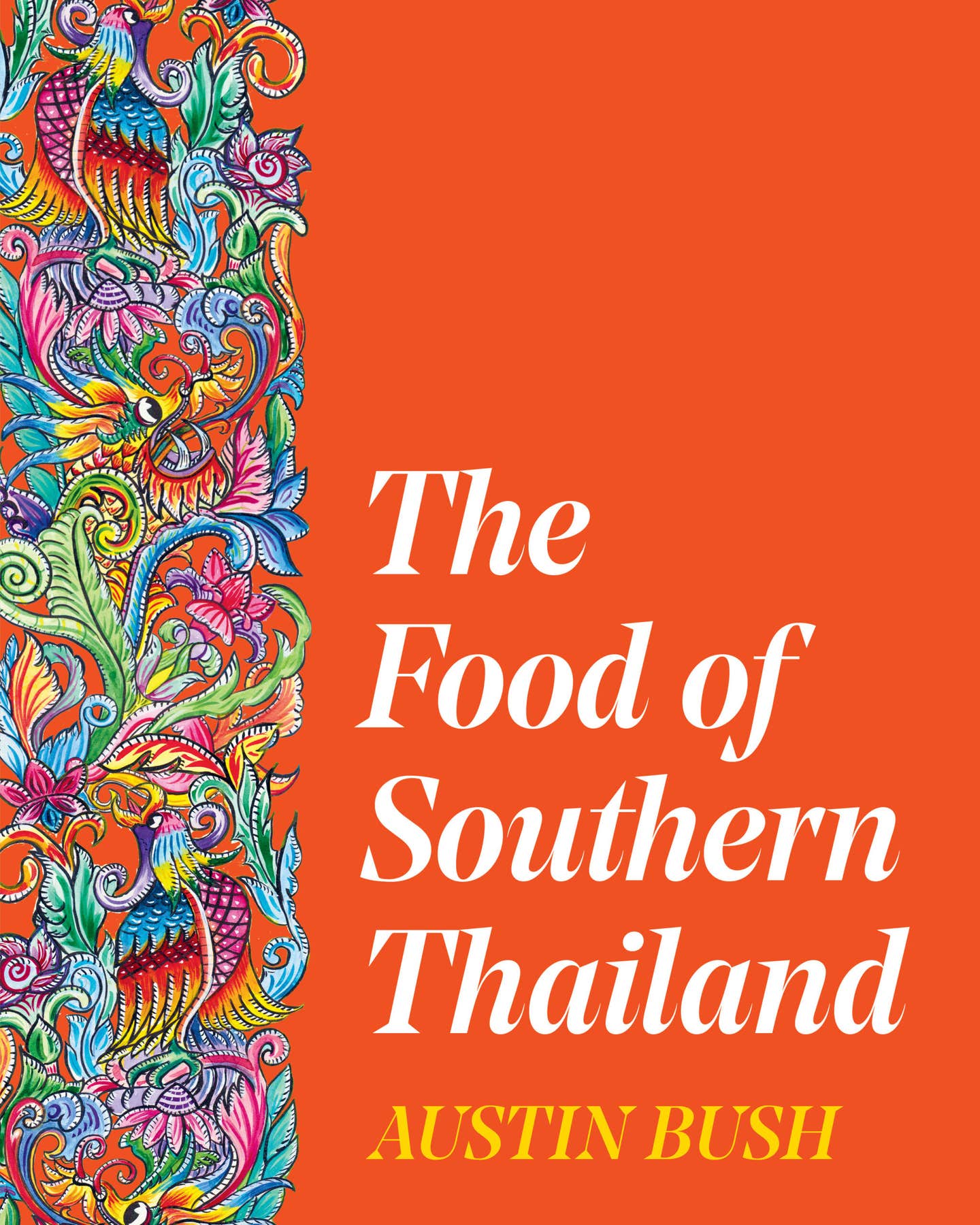
When you released your first book, The Food of Northern Thailand, in 2018, you were just ahead of the popular interest in regional Thai dishes. What motivated you to turn your attention to the food of Southern Thailand?
As I started the project of the first book, I was already seeing Andy Ricker and his former Pok Pok restaurants helping to make Americans aware of Northern Thai food, and of the regionality of Thai food in general, which was great. And after I did the book on Northern Thailand, I saw that more places were exploring that regionality, both in Thailand and even a bit in the United States, especially Southern Thai. Certainly there is Jitlada in Los Angeles, and in Brooklyn there’s Ugly Baby. In Bangkok, there’s even a restaurant called Sorn that does some Southern Thai food and is one of the hardest places to get into. So it just seemed like it was on the radar. But I knew very little about it—whenever I have free time, I tend to go up north. I'm not really a beach guy, and I’d only gone to a few of the islands. So there was a bit of a blank space in my knowledge of Thai food, and I was compelled to learn more about it.
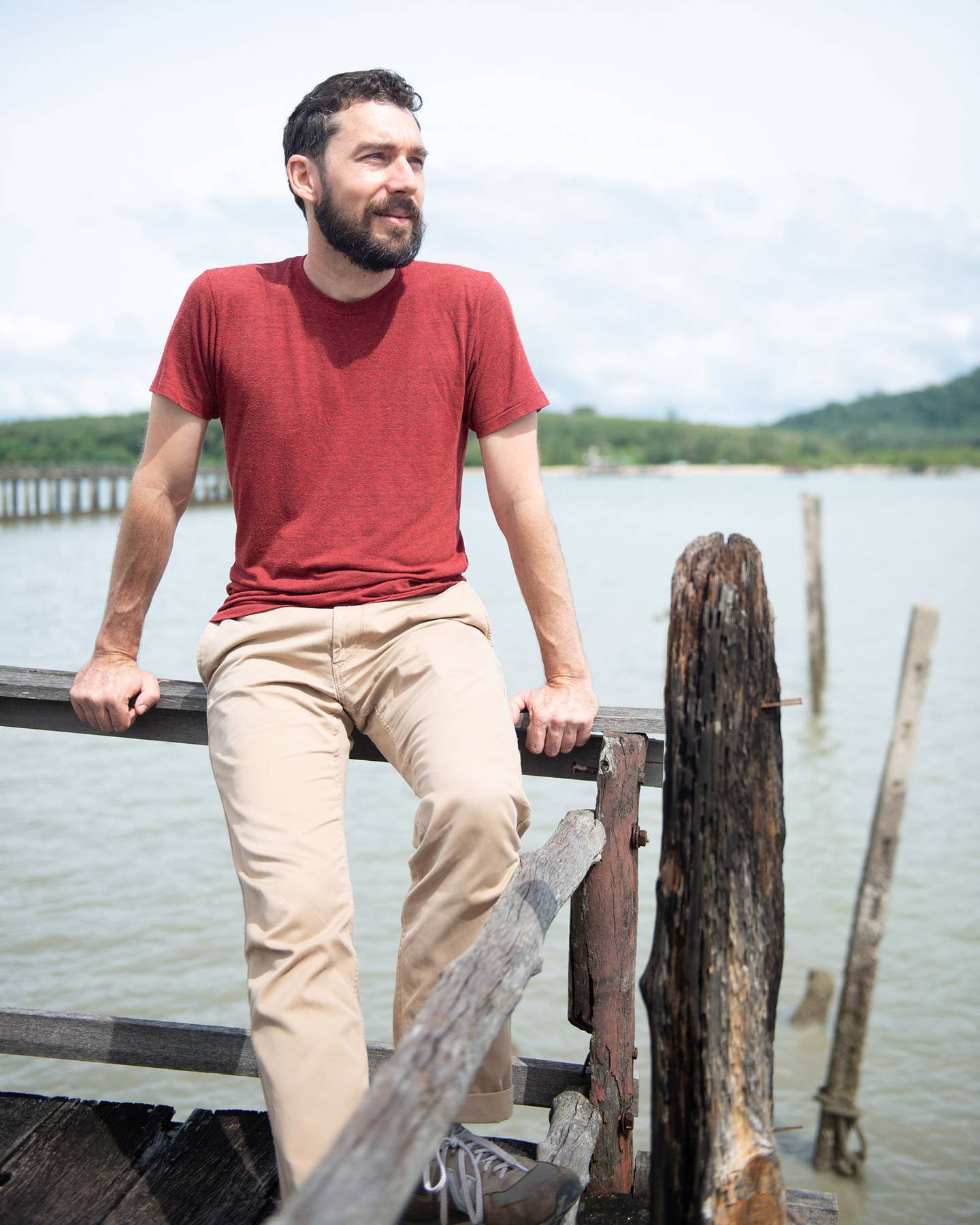
Talk a bit about your research process as you move from region to region in Thailand.
I wouldn’t really call myself a journalist; I’ve never worked in a newsroom or anything like that. But I use a lot of the same techniques as my journalist friends, and being accurate and asking questions and researching facts is really important to me. I always start by doing research, which sometimes can be as simple as looking stuff up online. There’s a lot of resources, and Thai people are pretty online, especially on Facebook, so that’s where I learn about little regional restaurants and niche recipes, and I use that to get a broad framework of what I’m doing. Then when I travel, I seek out local sources. For example, I might go to a tiny town in Southern Thailand with the idea of one dish, then I’ll start talking to people, and I’ll learn about another dish or ingredient or method of cooking. Sometimes the people I connect with are educators: people who teach at universities or people involved with the cultural side of things, promoting the culture of their community or their province. On a couple occasions I met with people who taught culinary science at local colleges and high schools, and they’re sort of vanguards and protectors of local recipes alongside the local government. Talking to people and asking questions, and always being curious, leads to more things opening up.
If I connect with someone, if someone is willing to show me how to make a dish, I do some research ahead of time. There is a pretty solid selection of cookbooks in Thailand; people do tend to record recipes, and in particular provinces or communities will self-publish cookbooks. These are my favorite souvenirs to buy anywhere in the world—weird, obscure, independently published cookbooks. I have a bunch of regional cookbooks, I go to libraries—I do my homework. I ask a lot of questions, and I’m meticulous about taking notes, video, photographs. And I always hope that the photographs will go into the book, which is another journalistic aspect of it. For many cookbooks, even if people do research in one place, the food photographs are often taken in a studio in London or Los Angeles or New York. But every photo you see in this book was taken in situ, of the actual dishes and places and people; they’re more like food photojournalism. The most manipulation I’ll do is maybe turn a plate or clean up a smear of something, but I wouldn’t even call it food styling. It was a little bit harder in Northern Thailand, where dishes are kind of brown and grilled, and don’t really pop that much, but in Southern Thailand, the dishes are so vibrant and colorful; they just pop.
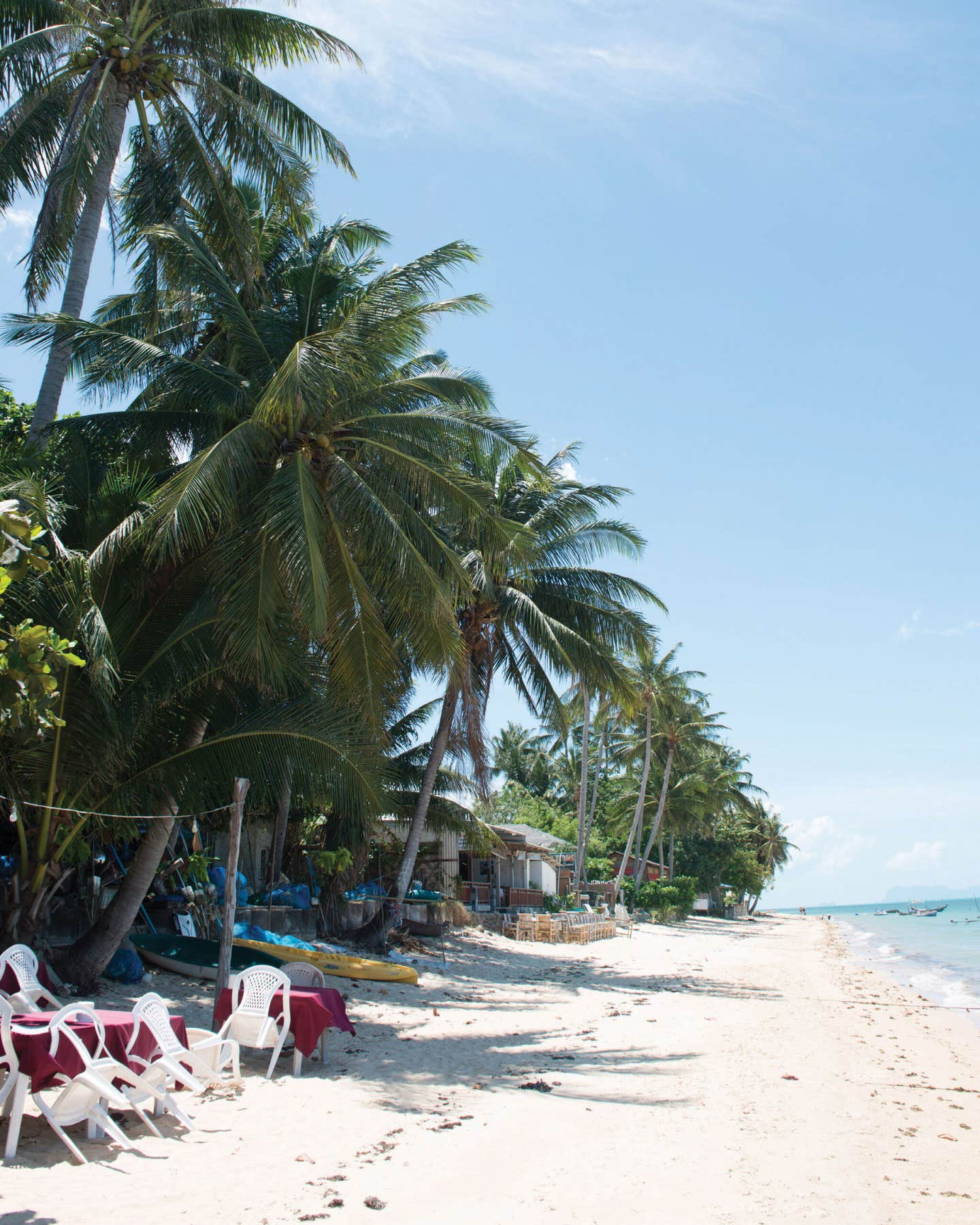
What do you think the key differences are between the tourist experience of food in Southern Thailand and the person who encounters this region through your book?
The vast majority of foreign tourists who go to Thailand, maybe 75% or more, go to an island or to a beach at some point. The places that they stay tend to be a bit isolated, and they end up eating at the backpacker café or at the resort. Rarely do they get out and eat at an “authentic” local place. It’s a sort of paradox: so many foreigners have been to the south, but I think very few of them have actually eaten food from the south. For example, people who go to a seafood restaurant in the south—both tourists and Thai people—may find that what they’re eating is more Chinese-influenced than anything, where the menu is sort of the same on the island Ko Samui as it would be in Bangkok. Especially in the south, where you have so many options that pull you in different directions, you need a bit of handholding and direction to the local dishes.
You give an exhaustive overview about the history of Southern Thailand, the different kingdoms and moments of conflict emerging over sea trade. What role does that history play in appreciating the cuisine?
To talk about any cuisine, you need to talk about its historical influences and background, even sometimes going back 1,000 years. But in the case of Southern Thailand, I just thought that those foreign influences are so apparent. In my previous book on Northern Thailand, I wrote about how the Thai People likely came from Southern China thousands of years ago, and so they were in Northern Thailand before they moved south. As a result, Northern Thai food is more like the original Thai food, meaning they use more indigenous ingredients and the cooking methods are really simple: soups, grilling, and even raw dishes. You go south, and things become more sophisticated, and you have all these influences. Indian traders brought things 1,000 years ago; ethnic Malay people were there and introduced a ton of things. Then you have influences from the Muslim world, from places like Saudi Arabia or Persia. Most recently, Chinese people came, and they had a huge influence by introducing the wok and ingredients like pork and duck and salted eggs. So you have to touch on those influences.
You also talk about this idea of the borders as being less rigid and much more ephemeral than they would be in other countries. How do you see these culinary exchanges happening across borders and along the coasts as a porous exchange?
It's really apparent in Southern Thailand, and there are two examples of that that come to mind. One is the deep south, which borders Malaysia. There are provinces that are today part of Thailand that were previously part of British Malaysia, and there’s a conflict that results from that—a lot of people today don’t want to be part of Thailand. In many ways these people live Malay lives in Thailand: they’re Muslim; they speak Yawi, a dialect of Malay; they have a different cuisine that is essentially Malay food. But at one point, they were all a colony of England, and then they became part of Thailand only in the 1930s or something like that.
And then the other one is on the Andaman Coast, which is the West coast. A long time ago there were a few places on that—Singapore, Malacca, Penang, Phuket, Trang to name a few—which were called the “Straits Chinese” by the British. These were old trade routes maintained by Chinese traders, and in those cities, today you find Peranakan or Baba Nyonya culture, a mix of Chinese and Southeast Asian language and culture and cooking. The Chinese have had a huge influence on that region, but it’s only in those places that it evolved into this unique form that entails food and dress and all kinds of different things. And even these foreign influences are really diverse. Thailand in general has a huge Chinese influence, but in Bangkok, almost everybody who’s Chinese is from one ethnic group. But down south, you find Cantonese, Hakka, Teochew, Hokkien people, all these groups that basically don’t exist elsewhere in Thailand. And that manifests itself in food as well—you find obscure Chinese dishes, you know, in Hokkien Province, but also in this one town in Southern Thailand as well. So it’s really fascinating to me.
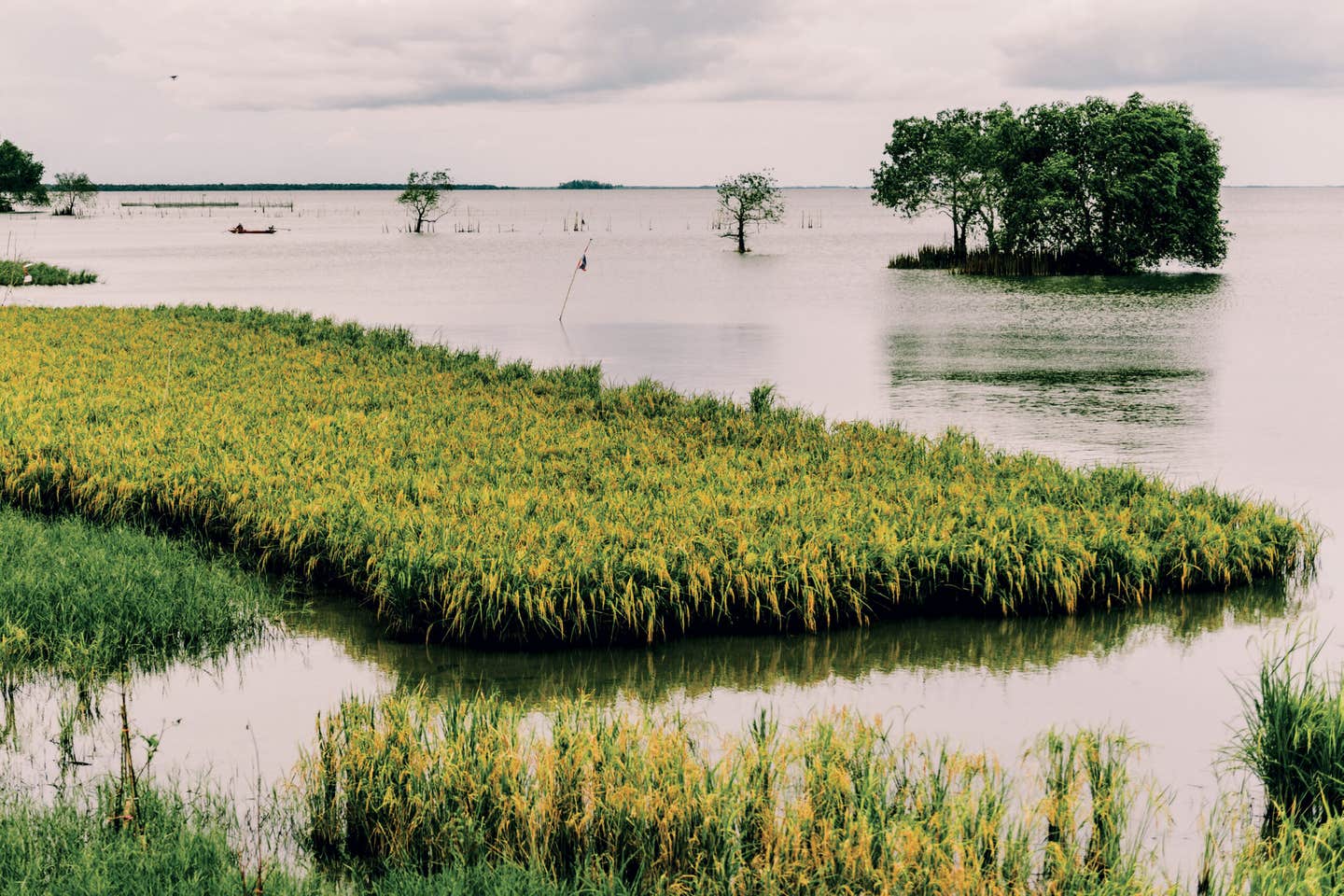
You give a lot of attention throughout the book to the people who work in agriculture in Southern Thailand, those who harvest the coconuts, who prepare the palm sugar, who ferment the shrimp paste, in a very embedded, almost ethnographic way. What role does an understanding of agricultural processes play in your research?
It’s really important to me. For a long time, food culture was obsessed with chefs, and I hope that maybe the next wave will be like people who produce the ingredients. In the case of Southern Thailand, some of the methods people use to produce these foods are so fascinating, especially visually. I’ve watched monkeys gathering coconuts a few times now, and it’s so fascinating to me, and so wacky and cool. And the old men who climb 40 to 50 feet up to pick or tap palm trees for sugar, too, it’s just amazing. Sometimes talking about agriculture producers can be a bit boring, but in cases like these, it looks very cool and it’s very unique.
What do readers need to know about the ingredients and cooking techniques of Southern Thailand to bring these dishes into their home kitchens?
It’s difficult to explain, because a lot of people may not have had these dishes before seeking out these ingredients. I think someone who buys this book probably isn’t expecting a phat thai recipe, even though both of my books have regional phat thai recipes. So I hope that people going into this book aren’t looking for what they know as standard Thai dishes, but maybe something a bit more adventurous, or more obscure in flavor. This is a niche cookbook about a very specific cuisine, and I know not everybody has access to these ingredients. So with this and even with my previous book, my intention was to create something that people could approach for different reasons. Of course there’s recipes, but someone could also sit down and just read this book for its cultural information, as a travelog, to gain perspective. I would also hope that someone who’s been to Southern Thailand might just like it, especially the pictures. But I didn't want to make just a cookbook, because not everybody can get fresh turmeric or mango seeds, so it needs to have different functions.
What I would urge people to do is to try and cook a bit more like Thai people—not to cook by measurements so much, more by taste. Thai dishes have so many elements, and often require many different cooking processes, so Thai cooks are constantly tasting and adjusting seasonings, and are especially attentive to smell. So I try to teach people, via text, to smell things, to taste test as they’re cooking, and to keep adjusting. I may describe a dish as predominantly sour, but if you like sweetness, you can bump that up, or reduce the saltiness. So the instructions I include in this book are more like broad parameters for a dish, and very much subject to preferences. For example, I made one of the dishes from this book in the United States, and I was too rigid about following my own instructions—meaning, I put 10 grams of chiles in the dish as written, and I found it was way too spicy. But then I realized I was using some Mexican chiles, which are really different from Thai chiles, much spicier and not as fragrant, and I hadn’t tasted them first. So I urge people to use the book as a guideline, and to rely on their senses a bit more.
You describe the province of Nakhon Si Thammarat as the home of the quintessential Southern Thai dining experience: the curry stalls. What is your advice for someone tasting their way through the curry stalls?
It’s really fun where there’s no menus to guide you, and you just roll into the place. It’s basically a big counter which can have everything from eight to 28 different dishes. Even for me, who knows a lot about food, I always encounter new things at these places. But I just sort of look, and whatever looks sort of interesting, or whatever I haven’t had before, that’s what I go for. It’s an interesting exercise in Thai ordering, because Thai food is all about balance and contrast. If I ordered, for example, a rich coconut milk curry, I’d want something different to go with it, like a crispy deep-fried dish, or a relatively simple soup. I wouldn’t want three different coconut milk-based curries; no Thai person would order that, they’d want the contrast or difference from dish to dish.
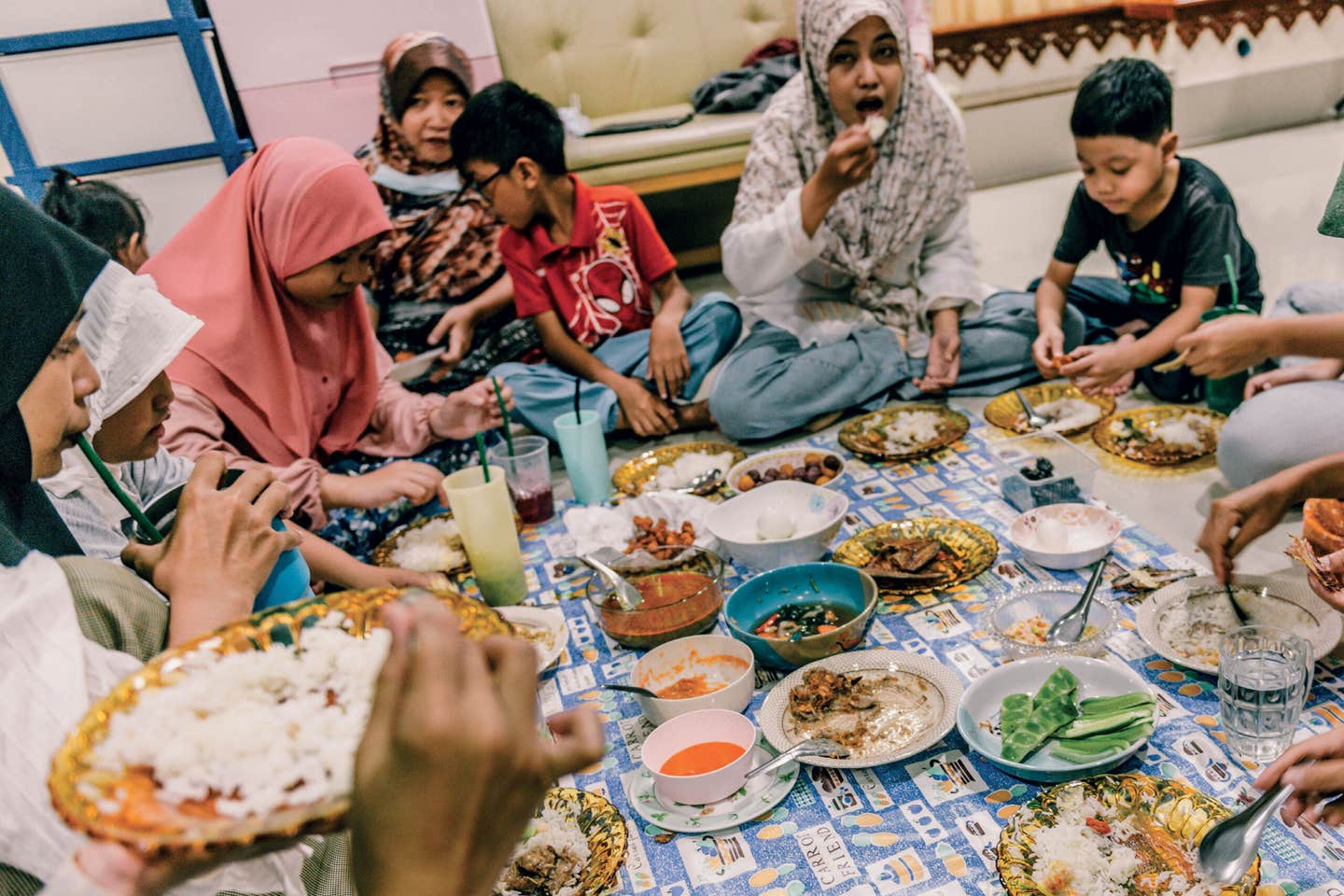
How did you see the many different Muslim foodways of Thailand shaping Southern Thai cuisine?
So in Thailand, about five percent of the population is Muslim, but the community has a huge influence on food. There’s a handful of Muslim dishes, including biryani, roti, and a handful of others that you can get everywhere in the country. But as you go further south, the region becomes really diverse, and almost no one outside of Thailand knows about any of the other dishes. So for me, I felt like I was a culinary explorer. I knew a little bit about Malay food, but there was so much diversity and so many interesting dishes, it was just fascinating. It was my favorite part of the book to research.
I went to one or two iftar feasts, to break the Ramadan fast, and I was expecting a big feast with dishes specific to the iftar. But at the feasts with the family I stayed with in Pattani, the dishes were basically the same as what they often enjoyed. There was one woman who made a fascinating dish of beef cooked in sweet coconut milk—more like a soup than a curry—but otherwise it was just a slightly fancier version of what they ate throughout the year. The special feasts are usually for weddings or religious ceremonies, where someone might slaughter a goat or something else. But for the iftar it was just kind of slightly nicer, more indulgent versions of the stuff that they normally have.
It is challenging to talk about, because in this region, there has been essentially a civil war going on for decades now, and there are some dangerous things happening, with roadblocks and explosions everywhere. As a result, some Thai people in Bangkok and elsewhere have developed a really negative perception of Muslims in the south and associate them with violence, much as some Westerners have. But in my experience, the Muslim Thai I met were so kind and friendly, and by far the most hospitable people I met. To work on these books, I have to get access to people's kitchens, and I have an advantage as a white guy who speaks Thai. People find that kind of charming or curious, or whatever. In the north, I found that people were quite shy and reserved, and so it was a little bit of a struggle to get into people’s homes. But in Southern Thailand, I was blown away by their hospitality and kindness of the Muslim families I met. I would love people to go down and meet them and visit the region, and not just go to the places that foreign tourists already go to.
The food in the countryside, meanwhile, is what you call “inland soul food,” where the ingredients really define the cuisine. What would you say defines Thai country cooking?
In the south, what comes to my mind first is rice, as rice is the most important food in the region, and it’s grown inland. But another example would be the “bitter beans” or “stink beans.” They’re not really farmed, they grow in these wild trees, but they’re the most emblematic Southern Thai ingredients, and certainly in Bangkok people associate them with Southern Thai food. But even in the south, you’re never very far from the ocean, so fish and seafood, whether fresh or preserved, tends to make its way into a lot of dishes.
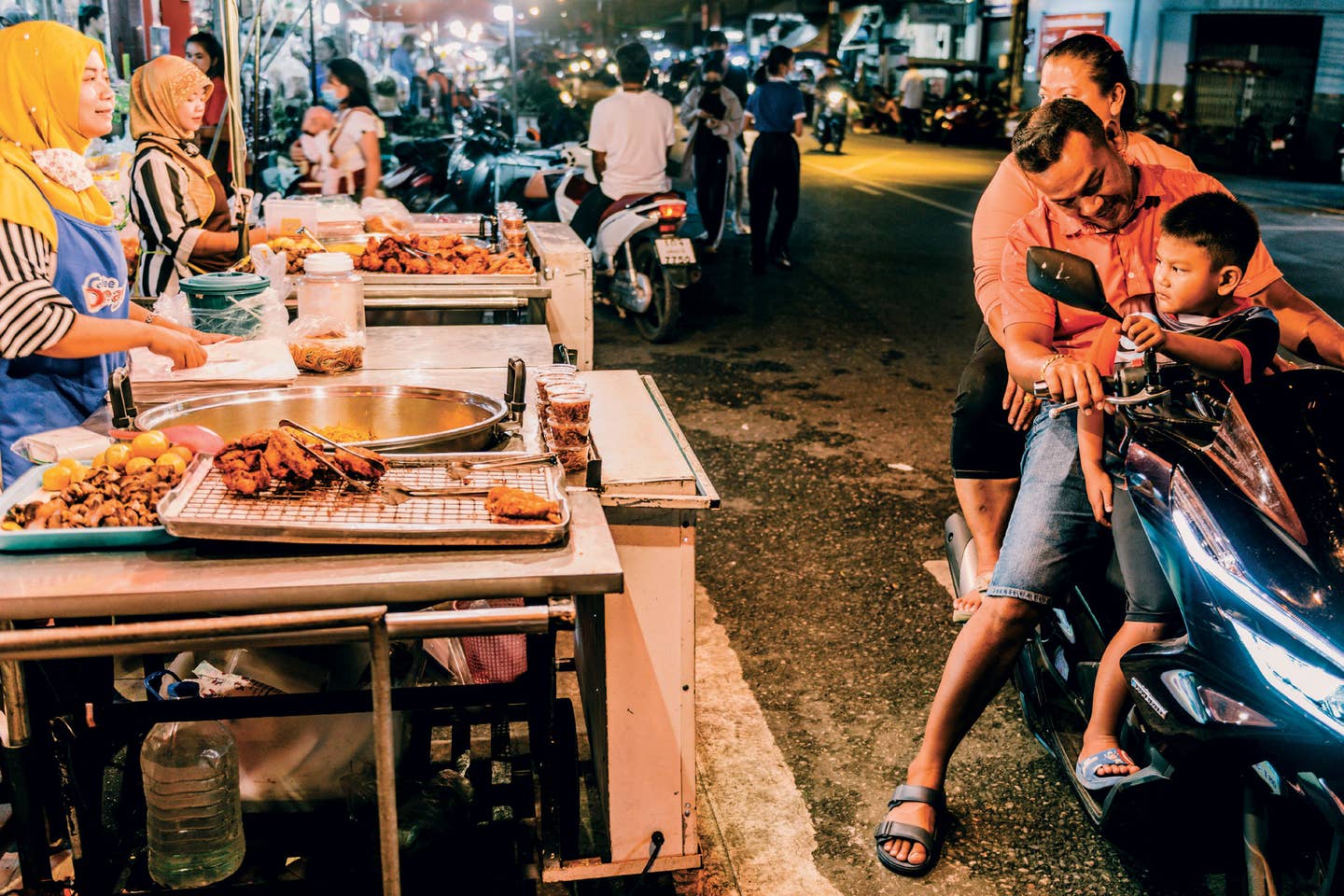
There are so many different dining encounters in Southern Thailand. What is the range of formality from one dining experience to another?
In general, Thailand is a pretty informal place, especially given how people eat. But the most interesting example were the curry stalls. For example, a curry stall can literally be someone’s house, where they’ve converted the front to function as a “restaurant,” where there may be seats but the owner’s junk is still lying around and there are family portraits on the walls, and their kids are doing homework at a table. Another curry restaurant I went to, by contrast, was a more traditional restaurant kitchen, with people wearing hair nets and boots and a whole setup, so you have that whole spectrum. It's all pretty informal, you know, and both were semi-open air establishments. The fanciest places would be the seafood restaurants I talked to, but honestly, they're not even really that fancy in terms of their amenities. It’s just more expensive, and more Chinese, but they’re still relatively informal.
Do you have any specific recipes in the book that you especially loved working on?
There are so many that are great—I’m heading to the U.S. to promote the book, and I’m preparing the Hat Yai-fried chicken a lot; not just because Americans love fried chicken, but because it’s such a delicious recipe and so distinct from other types of fried chicken. And if you’re willing to use MSG as I suggest, it really is great. But one of the dishes that really stands out to me—maybe not my favorite, but certainly one of the most delicious—is called Plaa Khem Thawt Kathi, and it’s just a fascinating recipe. You chop up salted fish and boil it down in thick coconut milk, and what happens is that the water evaporates from the coconut milk to leave the proteins behind. Then the oil starts to separate and you get to the bottom of the pan, and the proteins in the coconut start to get crispy, and you’re left with these salty, crumbly, rich sort of breadcrumbs at the end. Then you pour off the oil, and then you eat it almost like a dip with herbal sides or spooned over rice. It can be really messy because you may be splattering oil—the woman who taught me how to make it put empty soda bottles up over her sleeves to protect her arms—but it was a perfect example of what makes Southern Thai cooking so special.
This interview has been edited and condensed for clarity.
Recipes
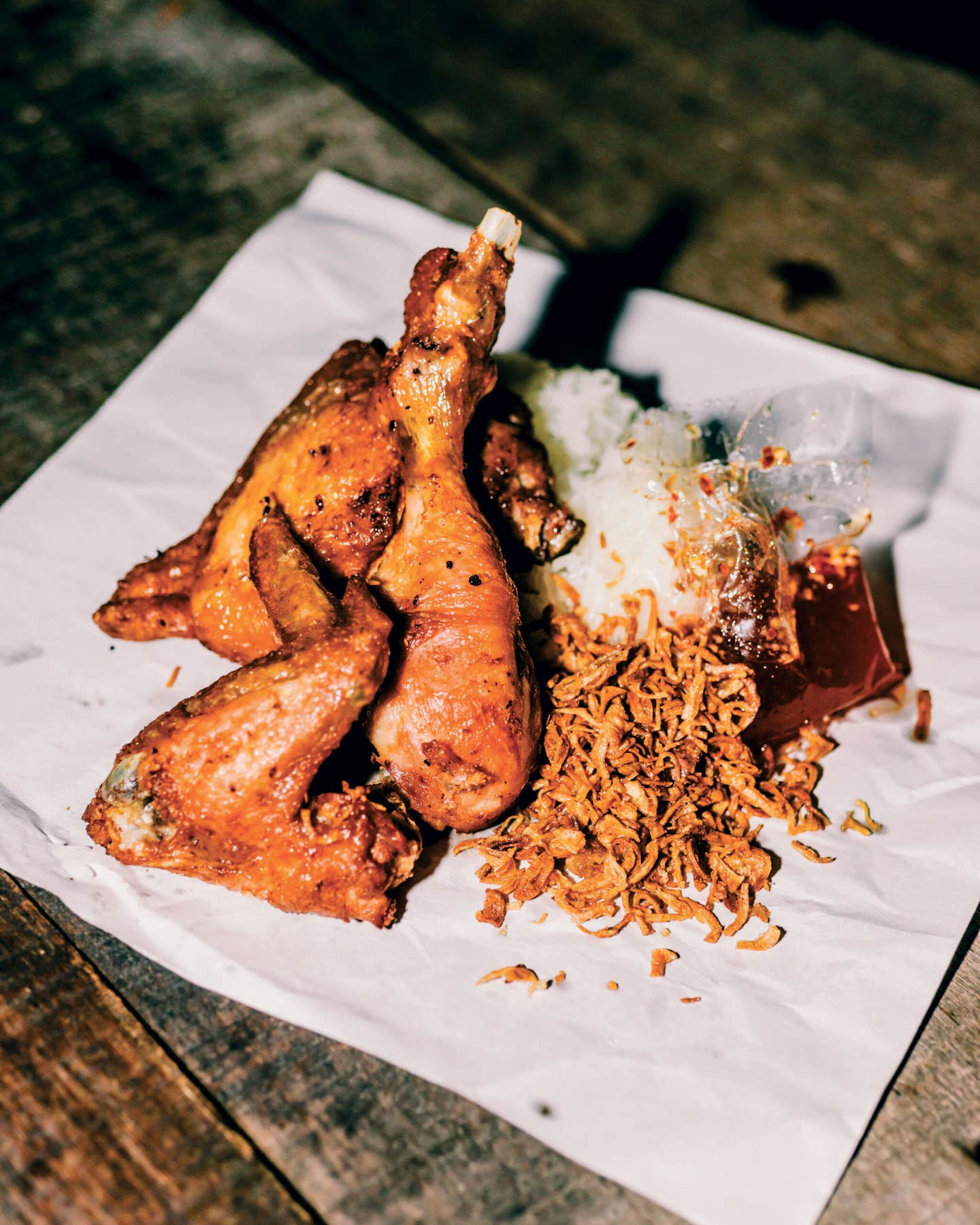
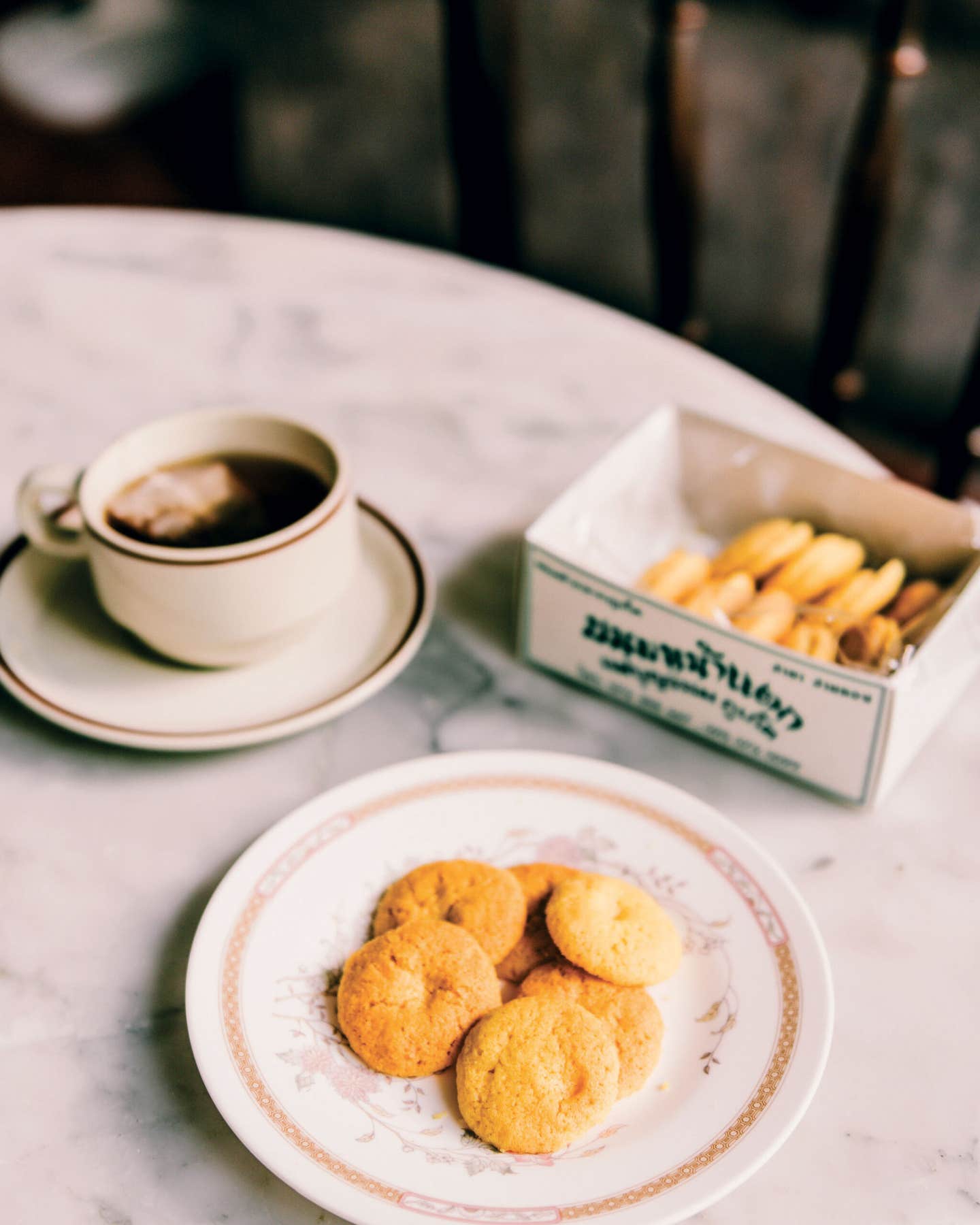
Keep Reading
Continue to Next Story










